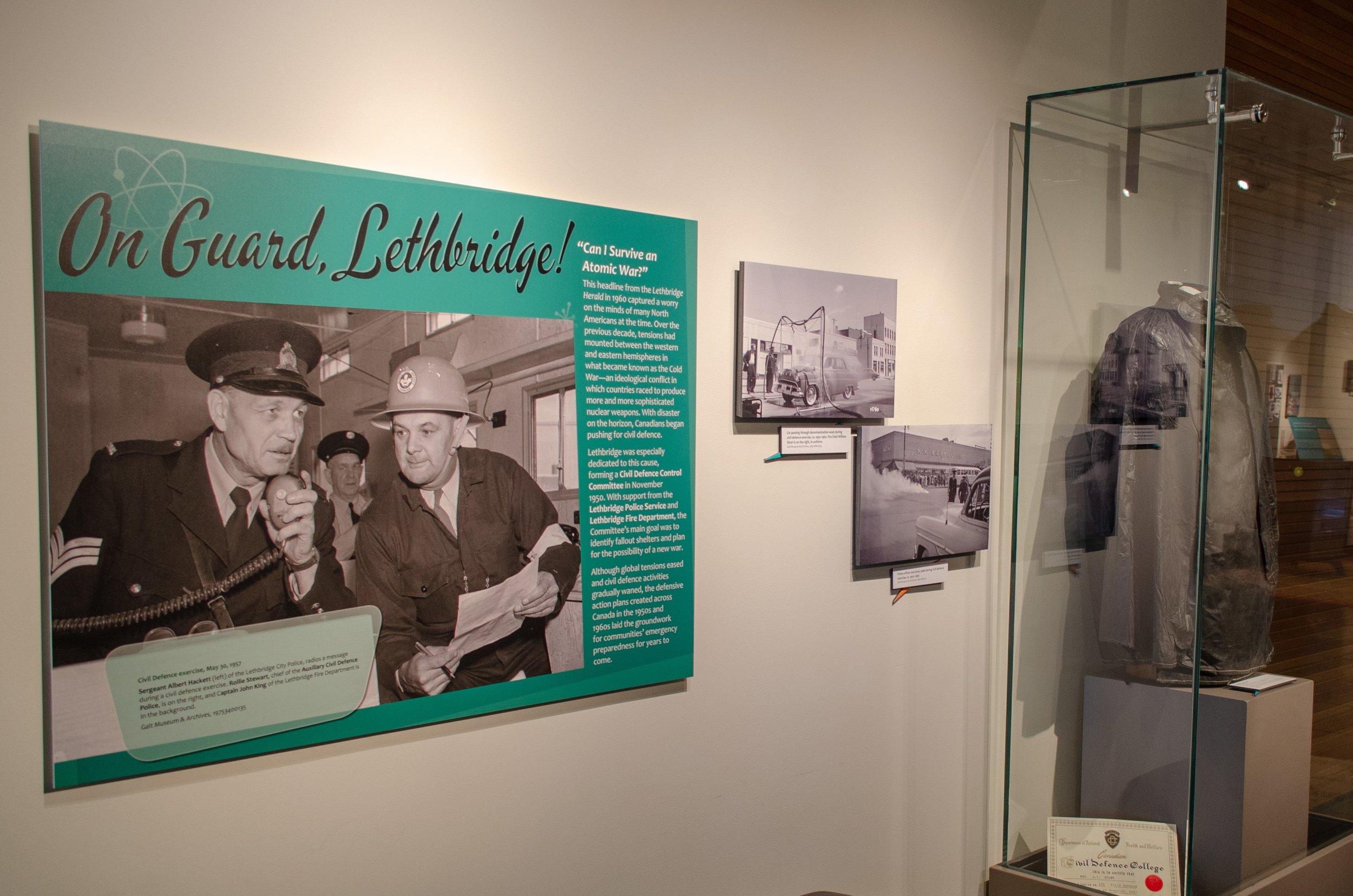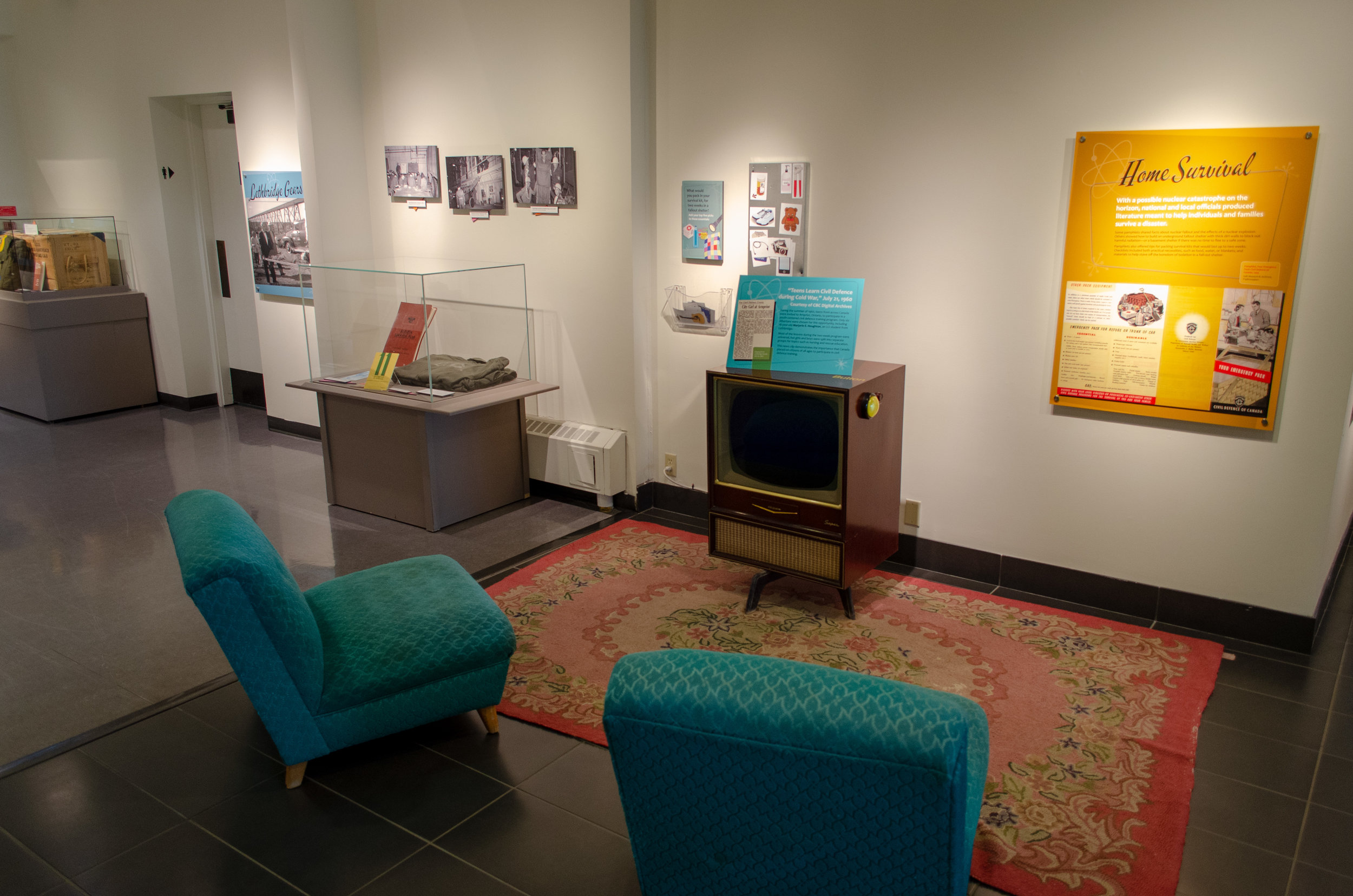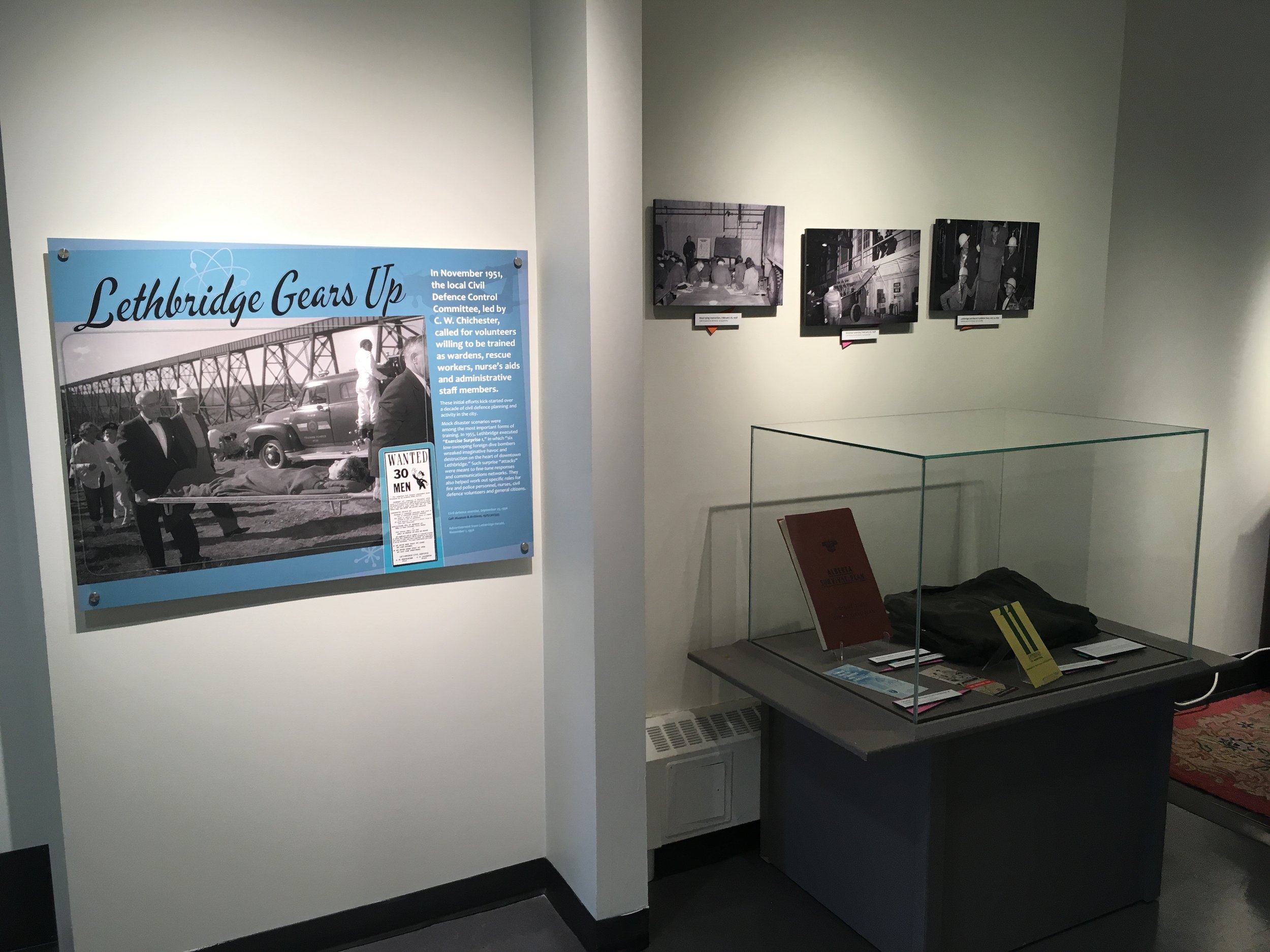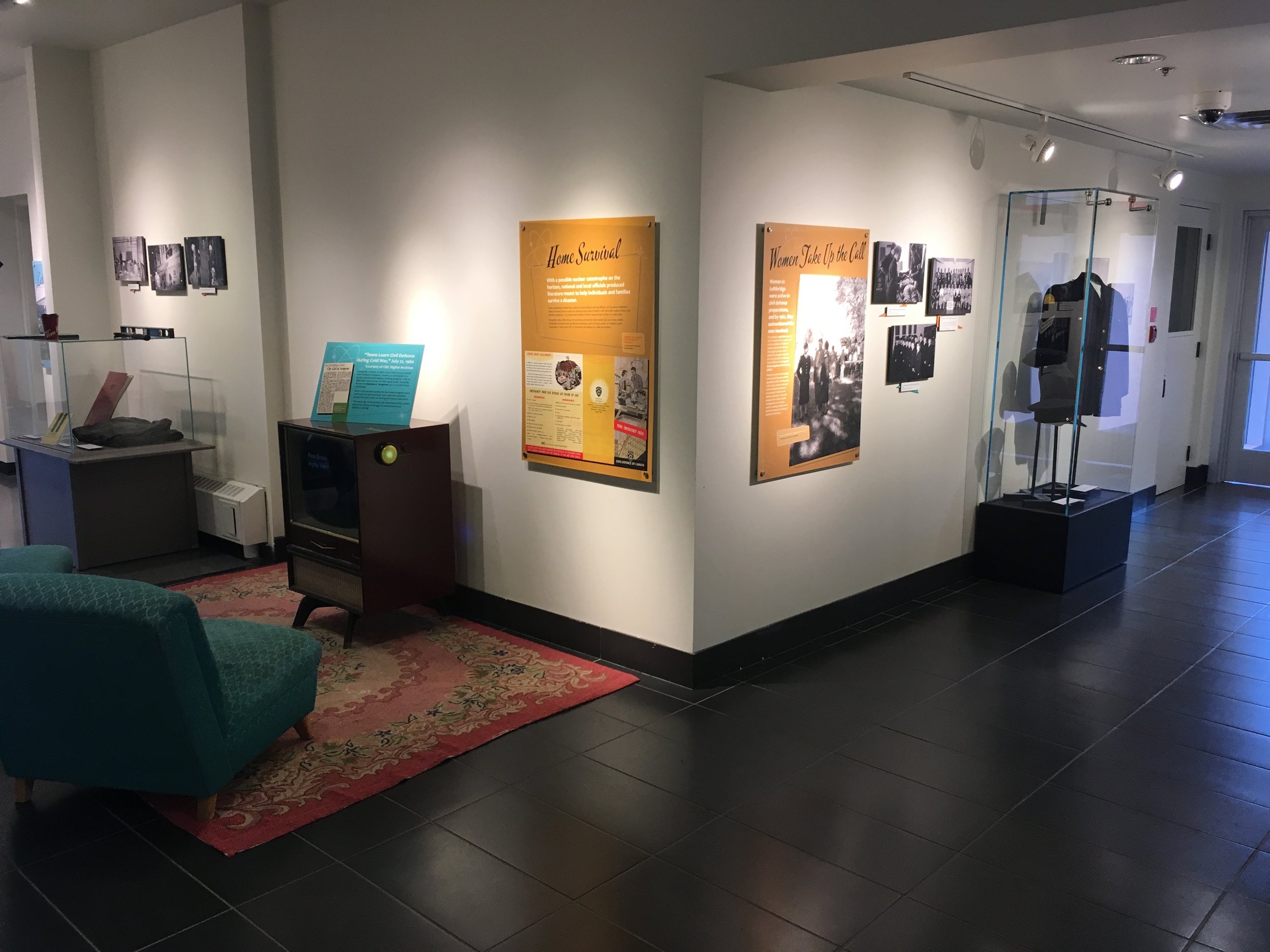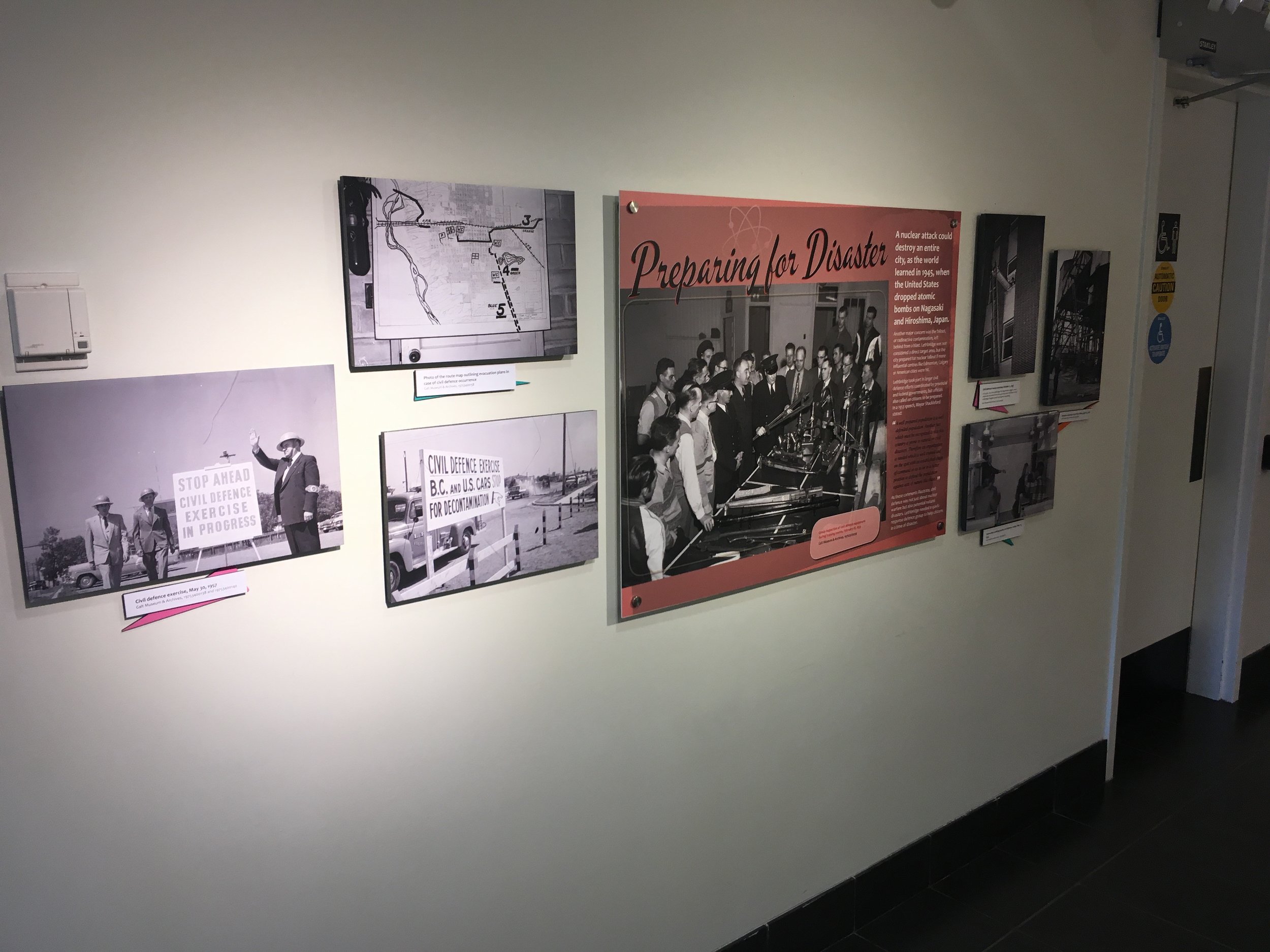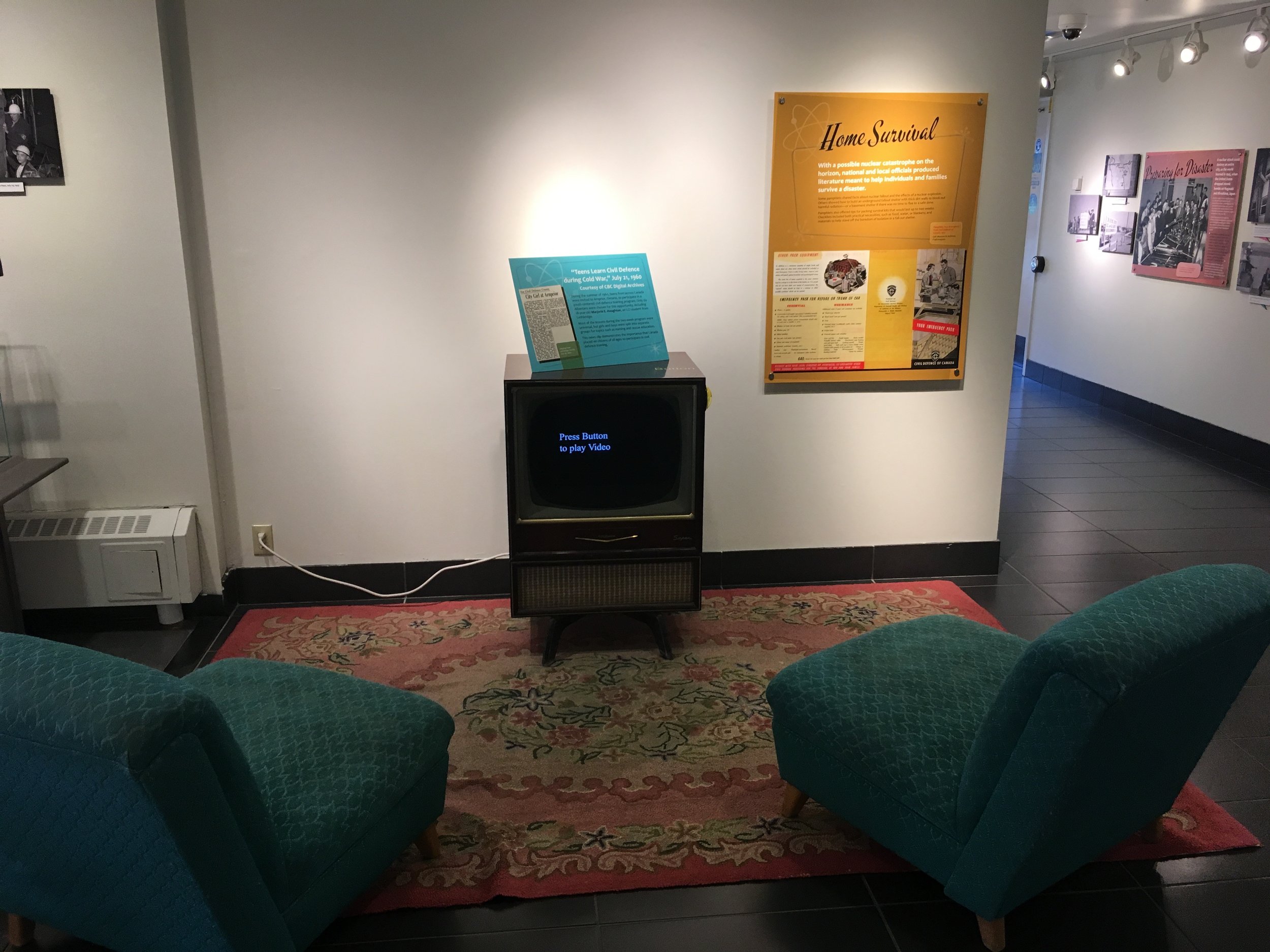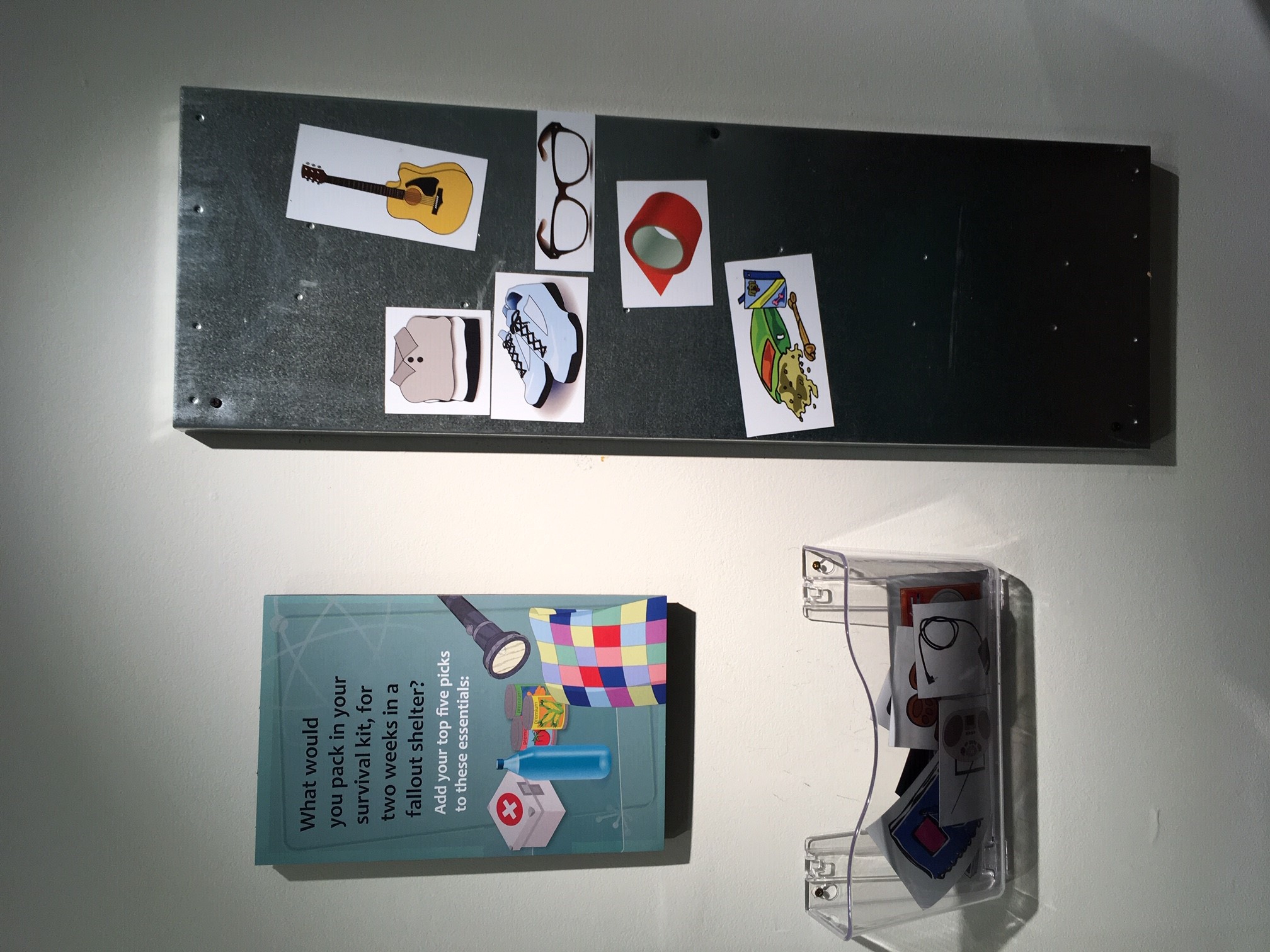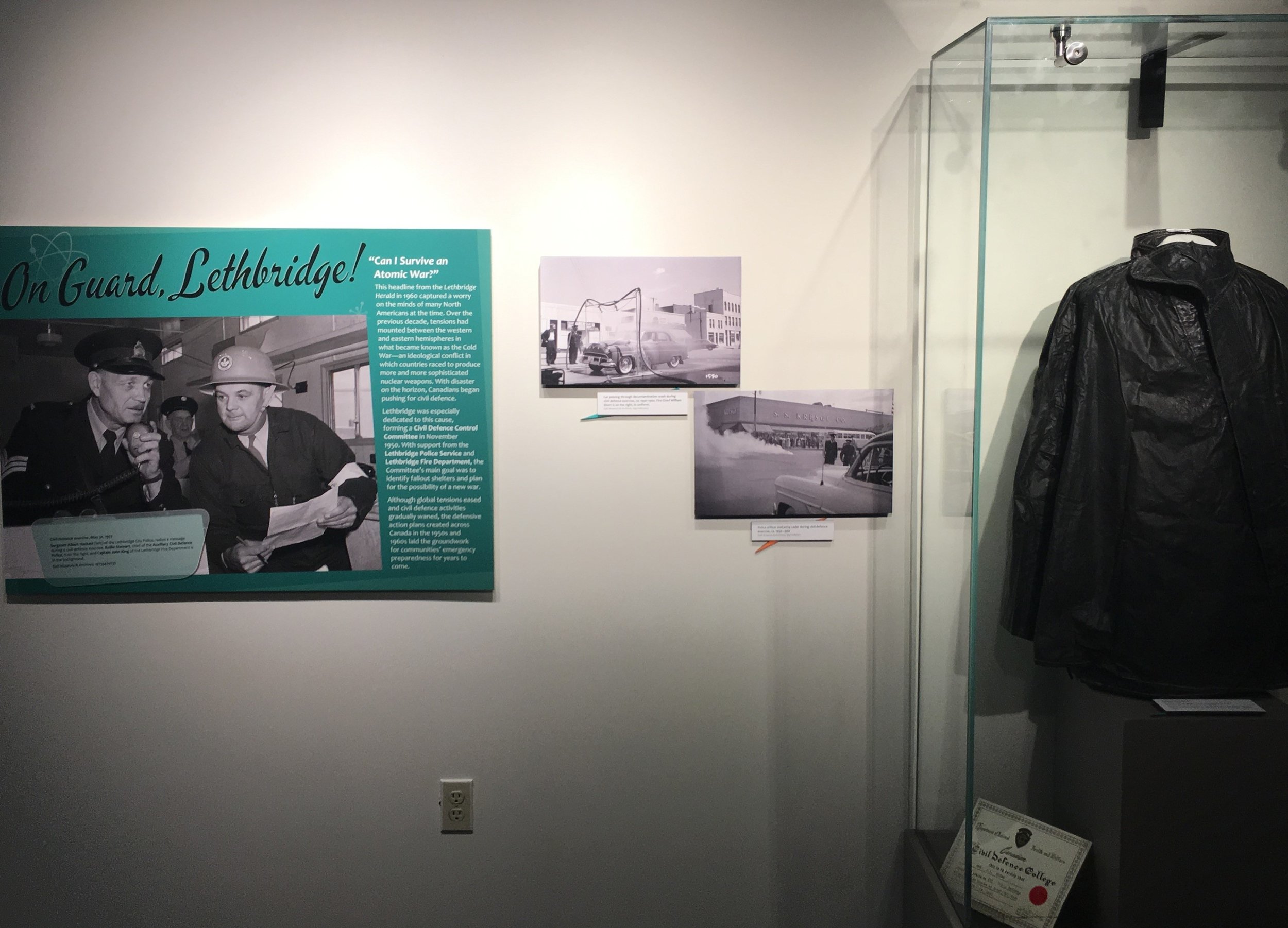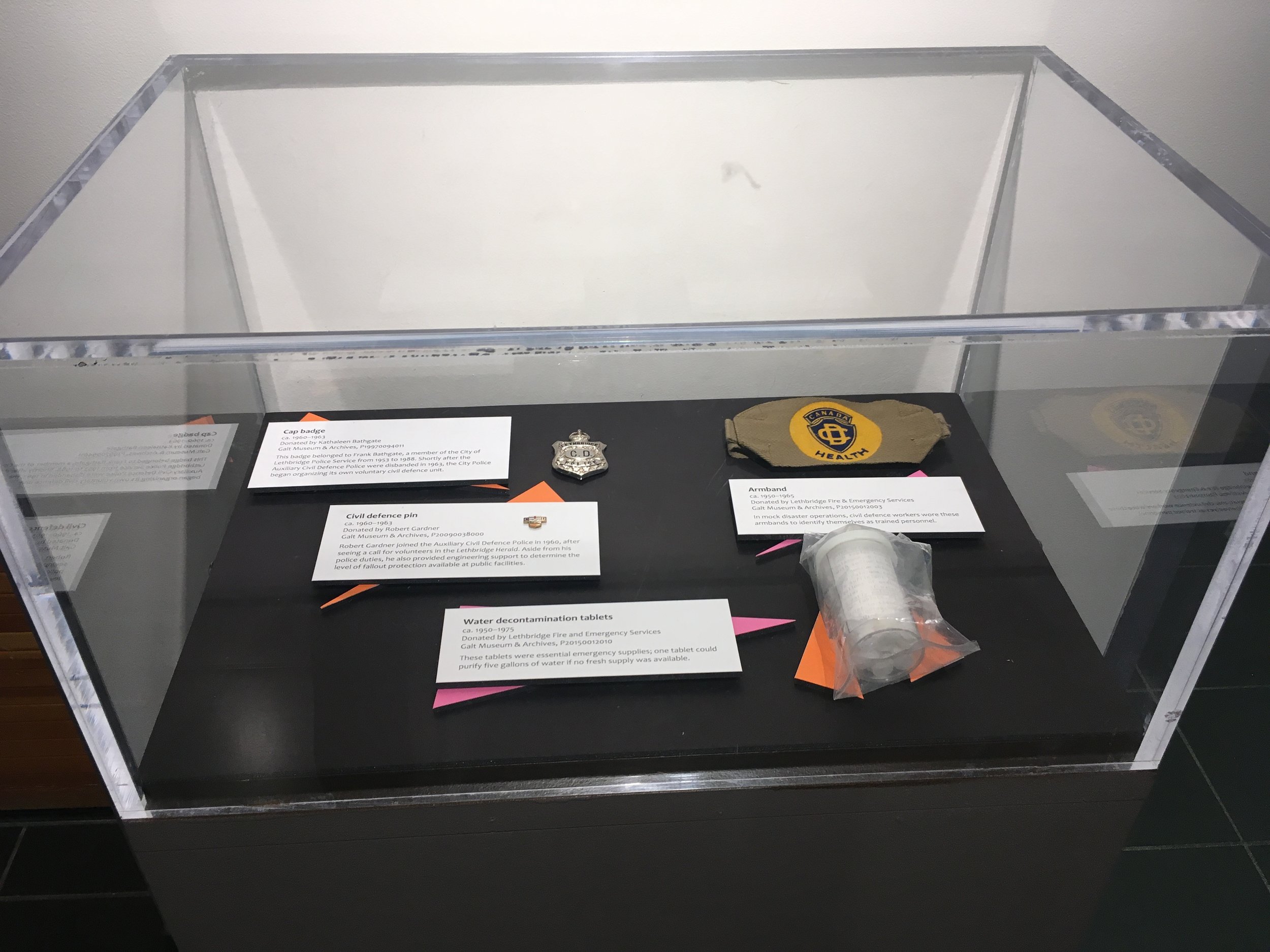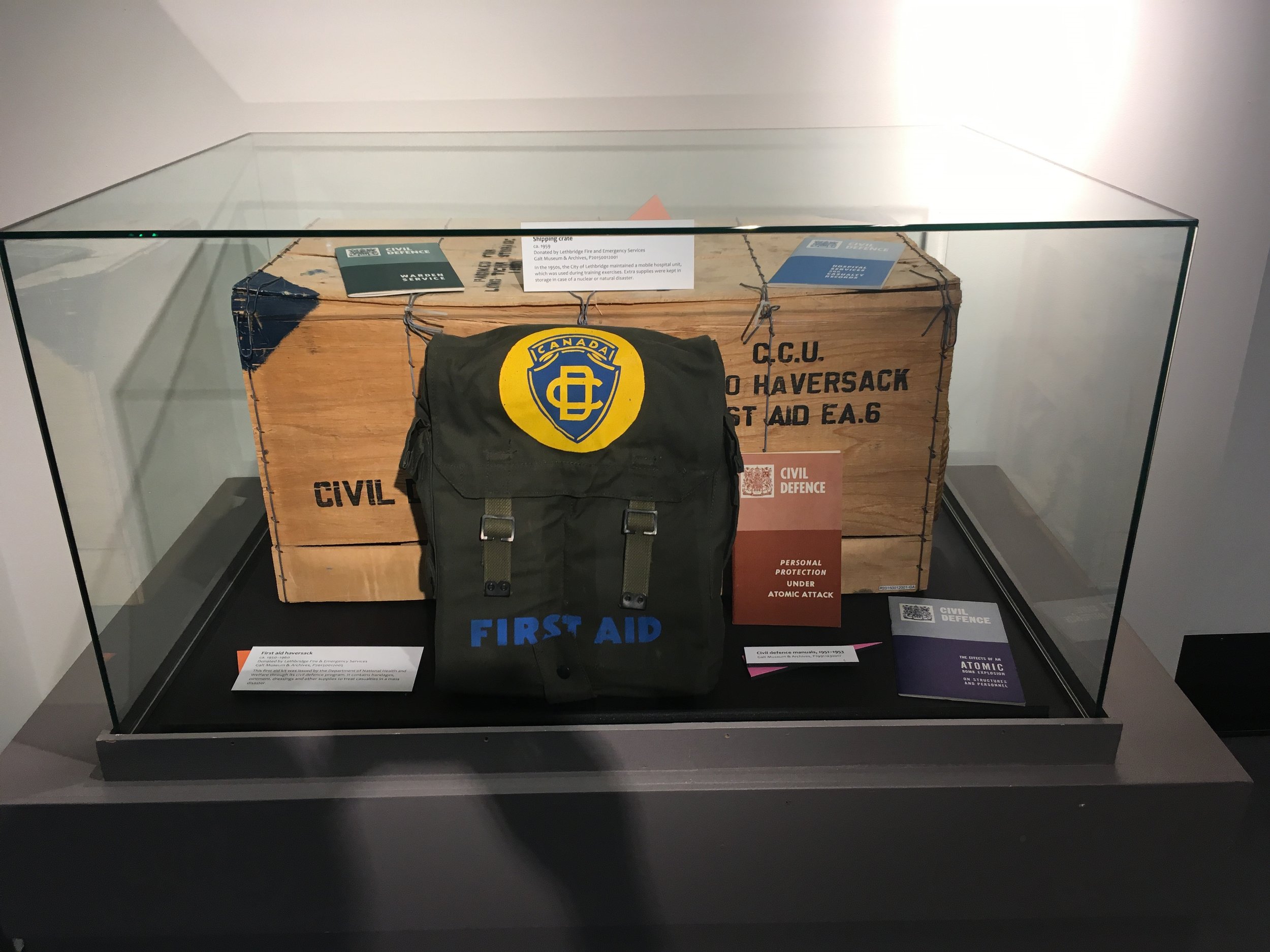curated by Danica Renke and Aimee Benoit
“Can I Survive an Atomic War?” This headline from the Lethbridge Herald in 1960 captured a worry on the minds of many North Americans at the time. Over the previous decade, tensions had mounted between the western and eastern hemispheres in what became known as the Cold War—an ideological conflict in which countries raced to produce more and more sophisticated nuclear weapons. With disaster on the horizon, Canadians began pushing for civil defence.
Lethbridge was especially dedicated to this cause, forming a Civil Defence Control Committee in November 1950. With support from the Lethbridge Police Service and Lethbridge Fire Department, the Committee’s main goal was to identify fallout shelters and plan for the possibility of a new war.
Although global tensions eased and civil defence activities gradually waned, the defensive action plans created across Canada in the 1950s and 1960s laid the groundwork for communities’ emergency preparedness for years to come.
Civil Defence exercise, May 30, 1957.
Sergeant Albert Hackett (left), of the Lethbridge City Police, radios a message during a civil defence exercise. Rollie Stewart, chief of the Auxiliary Civil Defence Police, is on the right, and Captain John King of the Lethbridge Fire Department is in the background.
Galt Museum & Archives, 19753400135.
Group inspection of civil defence equipment during training course, February 18, 1955
Galt Museum & Archives, 19752505054.
Preparing for Disaster
A nuclear attack could destroy an entire city, as the world learned in 1945, when the United States dropped atomic bombs on Nagasaki and Hiroshima, Japan. Another major concern was the fallout, or radioactive contamination, left behind from a blast. Lethbridge was not considered a direct target area, but the city prepared for nuclear fallout if more influential centres like Edmonton, Calgary or American cities were hit.
Lethbridge took part in larger civil defence efforts coordinated by provincial and federal governments, but officials also called on citizens to be prepared. In a 1953 speech, Mayor Shackleford stated:
A Well Prepared Population is a Well Defended Population. Another fact which must be recognized is that this country is prone to Natural or Civil Disasters. Therefore an Organization is needed which is well trained and on the Spot with an established chain of command so as to be in a better position to defend the population against acts of nature like these.
As these comments illustrate, civil defence was not just about nuclear warfare but also potential natural disasters. Lethbridge needed a quick-response defence group to help citizens in a time of disaster.
Armband, ca. 1950–1965.
In mock disaster operations, civil defence workers wore these armbands to identify themselves as trained personnel.
Donated by Lethbridge Fire & Emergency Services. Galt Museum & Archives, P20150012003.
First aid haversack, ca. 1950–1960.
This first aid kit was issued by the Department of National Health and Welfare through its civil defence program. It contains bandages, ointment, dressings and other supplies to treat casualties in a mass disaster.
Donated by Lethbridge Fire & Emergency Services. Galt Museum & Archives, P20150012005
Advertisement from Lethbridge Herald, November 1, 1958.
Lethbridge Gears Up
In November 1951, the local Civil Defence Control Committee, led by C. W. Chichester, called for volunteers willing to be trained as wardens, rescue workers, nurse’s aids and administrative staff members. These initial efforts kick-started over a decade of civil defence planning and activity in the city.
Mock disaster scenarios were among the most important forms of training. In 1955, Lethbridge executed “Exercise Surprise 1,” in which “six low-swooping foreign dive bombers wreaked imaginative havoc and destruction on the heart of downtown Lethbridge.” Such surprise “attacks” were meant to fine-tune responses and communications networks. They also helped work out specific roles for fire and police personnel, nurses, civil defence volunteers and general citizens.
Civil defence personnel with new uniforms, March 7, 1960.
Galt Museum & Archives, 19752908232.
Civil defence pin, ca. 1960–1963.
Robert Gardner joined the Auxiliary Civil Defence Police in 1960, after seeing a call for volunteers in the Lethbridge Herald. Aside from his police duties, he also provided engineering support to determine the level of fallout protection available at public facilities.
Donated by Robert Gardner. Galt Museum & Archives, P20090038000.
Men’s cap, ca. 1960–1963.
In March 1960, the Auxiliary Civil Defence Police were given their first proper uniforms, which included these caps.
Donated by Lethbridge Fire and Emergency Services. Galt Museum & Archives, P20150012004.
Civil Defence Police uniform, ca. 1960.
The Civil Defence Police operated in Lethbridge from 1951 to 1963 as a volunteer auxiliary unit. They received training from the Lethbridge City Police and retired Royal Canadian Mounted Police members. In 1960, the unit’s 16 men and two women were issued with their first uniforms.
Donated by Dorothy Tewksbury. Galt Museum & Archives, P19870044001.
Cap badge, ca. 1960–1963.
This badge belonged to Frank Bathgate, a member of the City of Lethbridge Police Service from 1953 to 1988. Shortly after the Auxiliary Civil Defence Police were disbanded in 1963, the City Police began organizing its own voluntary civil defence unit.
Donated by Kathaleen Bathgate. Galt Museum & Archives, P19970094011.
Women Take Up the Call
Women in Lethbridge were active in civil defence preparations, and by 1962, they outnumbered the men involved. For example, Jean Brown served as CD Covener for six years, and as the assistant civil defence welfare director for the city. She taught courses on civil defence to the general public and was the local civil defence liaison officer for the Imperial Order Daughters of the Empire (IODE).
Women involved with nursing were needed because of their specialized skills. Staring early in the 1950s, nurses took part in the simulated treatment of wounded victims in civil defence exercises. They also prepared for various health emergencies or concerns, such as treating nuclear burns and the emergency feeding of displaced individuals.
Women’s cap, ca. 1960–1963.
This cap belonged to one of three women who graduated from a Civil Defence Police training course, along with 17 other special constables, in November 1959.
Donated by Lethbridge Fire and Emergency Services. Galt Museum & Archives, P20150012006.
Women at civil defence meeting, September 10, 1960.
Galt Museum & Archives, 19752908240.
Home Survival
With a possible nuclear catastrophe on the horizon, national and local officials produced literature meant to help individuals and families survive a disaster. Some pamphlets shared facts about nuclear fallout and the effects of a nuclear explosion. Others showed how to build an underground fallout shelter with thick dirt walls to block out harmful radiation—or a basement shelter if there was no time to flee to a safe zone.
Pamphlets also offered tips for packing survival kits that would last up to two weeks. Checklists included both practical necessities, such as food, water, or blankets; and materials to help stave off the boredom of isolation in a fall-out shelter.
Pamphlet, Your Emergency Pack: Civil Defence of Canada, 1959. Galt Museum & Archives, P19821049001.
Clipping from Lethbridge Herald, July 20, 1960.
Youth Involvement
During the summer of 1960, teens from across Canada were invited to Arnprior, Ontario, to participate in a youth-centered civil defence training program. Only six Albertans were chosen for this opportunity, including 18-year-old Marjorie E. Houghton, an LCI student from Lethbridge.
Most of the lessons during the two-week program were universal, but girls and boys were split into separate groups for topics such as nursing and rescue education. This news clip demonstrates the importance that Canada placed on citizens of all ages to participate in civil defence training.


























